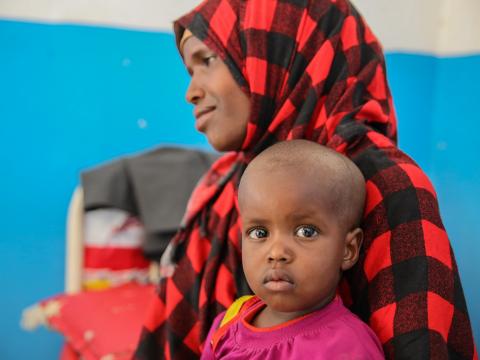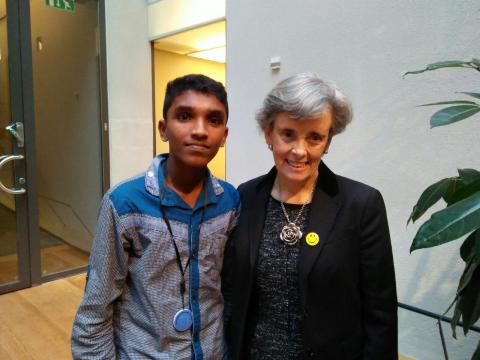
Why we need naming and shaming
Featured Image: Abdi, 2, and his mother in a health centre in Somalia. Stefanie Glinski/World Vision
By Lyndsay Hockin, UN Representative for Humanitarian Affairs, World Vision International
The worst kinds of violations of children’s rights are committed every day because of conflict. Horrific acts, like 30 children shot and killed by State armed forces for standing at a fence in a demonstration, make a blip on our radar but quickly slide into a distant memory. Attacks on schools and health care facilities – there were 1,023 verified attacks this year, an increasing trend - barely register. We are not seeing an end to violence against children but if anything, an escalation.
Inside the 20 countries officially monitored for grave violations of children’s rights, there are limited means for accountability.
The rule of law does not often reach children in these countries; justice mechanisms citizens normally rely on – criminal investigation and judicial procedures for murder, assault, or kidnapping – most likely won’t happen.
So how can we have accountability? What’s left for children?
International law. Since its creation in 2005 the United Nations Monitoring and Reporting Mechanism (MRM) on the six grave violations of children’s rights (killing and maiming, recruitment and use, sexual violence, abduction, attacks on schools and hospitals, denial of humanitarian assistance) forms the factual basis for the UN Secretary-General’s Annual Report on Children and Armed Conflict.
Last week, the annual report covering 2018 will be discussed by States on the UN Security Council in a debate open to the public. The findings are damning, with at least 24,000 grave violations of children’s rights committed – the real number is likely more than double. Killing and maiming of children globally reached the highest recorded number of incidents in 13 years when the MRM began collecting data in 2005.
Why do we ‘name and shame’?
Because the international, public condemnation of the perpetrators on this report’s ‘list of shame’ is an important means of accountability for the children who survived these violations and for those who didn’t – potentially the only means. Where domestic protection systems fail and there is not yet justice for children, ‘naming and shaming’ can be all that is left. This is what World Vision's It takes a world to end violence against children campaign is trying to change.
Does ‘naming and shaming’ matter? To States, absolutely. In 2016, intense political pressure from Saudi Arabia led the UN Secretary-General Ban Ki Moon to remove the Saudi-led Coalition from his ‘list of shame’ for killing and maiming children in Yemen.
It is paramount then that the list of perpetrators is credible and accurate. Unfortunately, this basic standard was not achieved.

This year, the UN Secretary-General Antonio Guterres did not list the Saudi-led Coalition for attacks on schools and hospitals, despite the UN’s own verification of 15 attributed attacks. The Coalition was listed as a perpetrator that “put in place measures … aimed at improving the protection of children” on killing and maiming children, despite being responsible for 729 child casualties (43% of total child casualties) – again, according to UN data from the MRM. This is just one of the egregious examples of the UN Secretary-General’s list’s incongruity with the UN’s own verified incident reporting.
Decisions not to list parties at all or to offer undue praise to perpetrating parties that engaged with the UN or made some commitments without tangible actions is problematic, deeply and devastatingly undermining the reporting mechanism at the heart of this key form of accountability.
The bias towards State parties to receive this undue praise should not be overlooked. Lack of credible and accurate listing, particularly when this confounds the UN’s own verification, allows parties that perpetrate grave violations ‘off the hook.’
Secretary-General Guterres had a bold vision in 2015, defined by a powerful moment where world leaders committed to the 2030 Agenda, 17 Sustainable Development Goals and to ‘leave no one behind.’ This year’s report on children and armed conflict demonstrates not only that girls and boys are being left behind, but that perpetrators can seemingly get away with it. It demonstrates a lack of political will to protect children and stand up for accountability.
World Vision will continue to speak out for justice and support girls and boys affected by conflict, through our responses, psychosocial support and investment in communities to support local prevention, to end violence against children everywhere, especially in conflict . But accountability does not rest with us. It lies with those who inflict this horror on children and with the UN Secretary-General, who holds the power to ‘name and shame’ all of those parties responsible, without bias, with transparency, for children.

